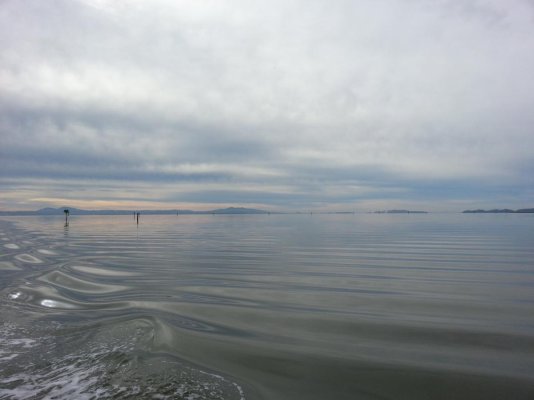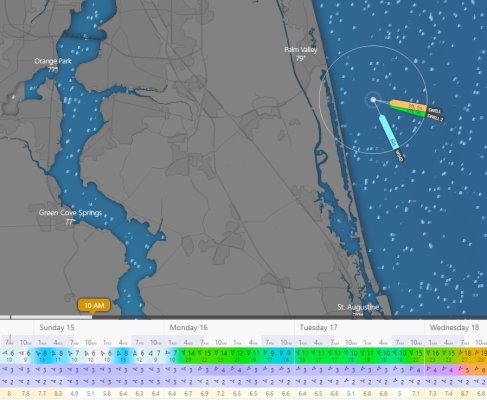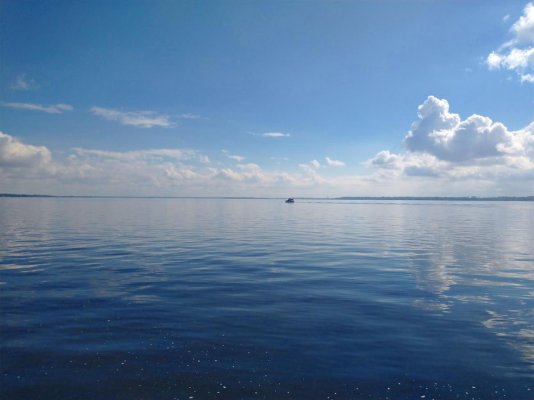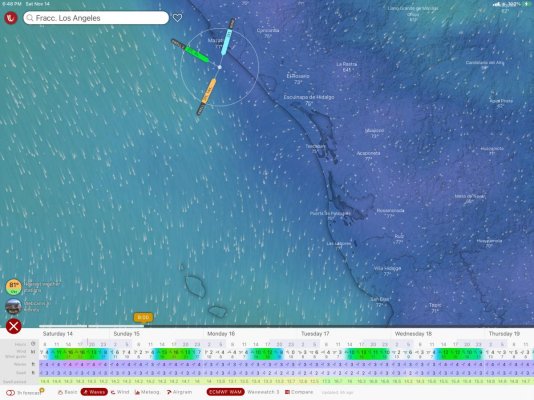menzies
Guru
Thinking of running off shore tomorrow between Mayport and St Augustine. Windy is showing waves of 3 feet and swell of 3 feet.
Their definitions are:
Waves: Significant wave height and its period of all wave types combined (swell and wind waves). Close to the shoreline, the actual height is influenced by the shape of the sea bottom.
Swell1: A swell consists of wind-generated mechanical waves that are not significantly affected by the local wind at that time. They have been generated elsewhere and some time ago, usually travelling long distances.
So is total height (wave and swell) three feet or is the total height six feet?
Big difference comfort-wise!
Their definitions are:
Waves: Significant wave height and its period of all wave types combined (swell and wind waves). Close to the shoreline, the actual height is influenced by the shape of the sea bottom.
Swell1: A swell consists of wind-generated mechanical waves that are not significantly affected by the local wind at that time. They have been generated elsewhere and some time ago, usually travelling long distances.
So is total height (wave and swell) three feet or is the total height six feet?
Big difference comfort-wise!





